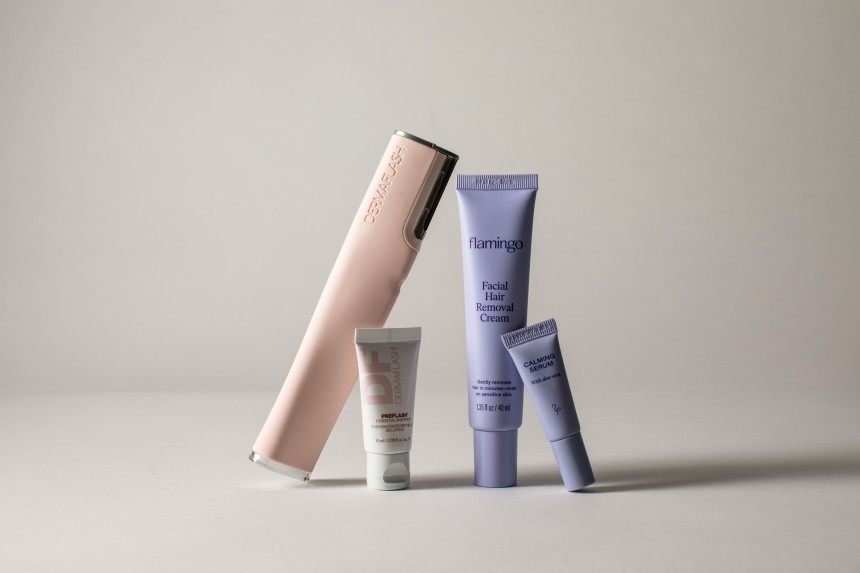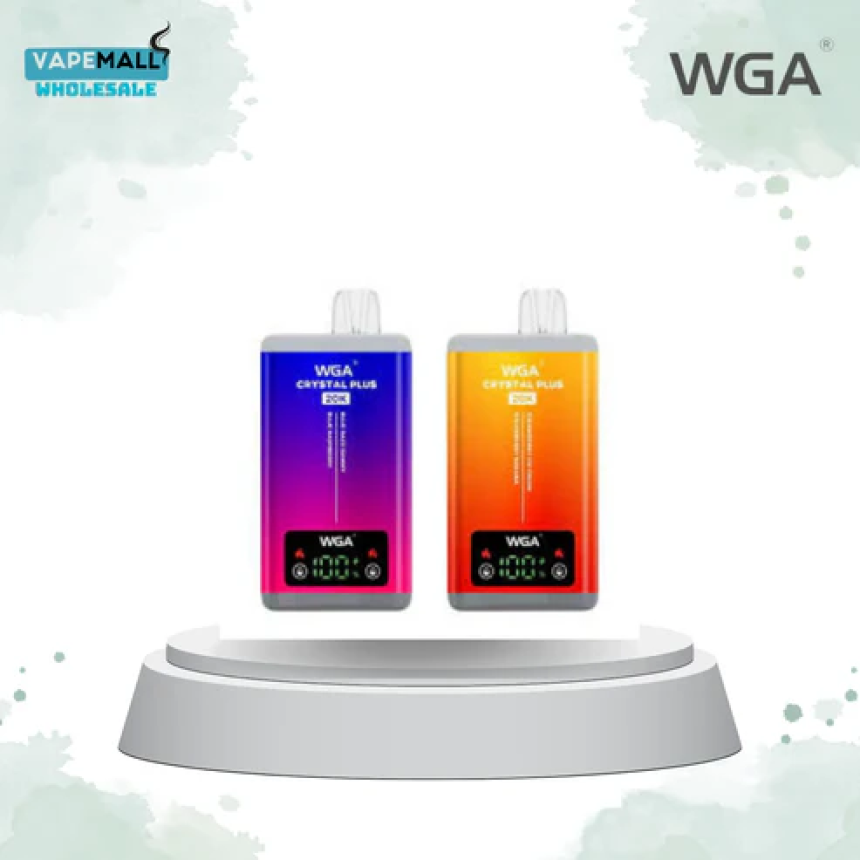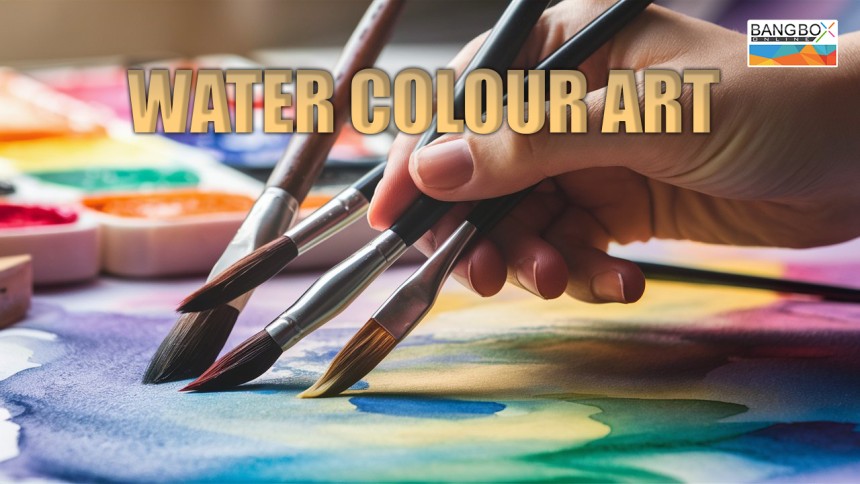
Water Colour Art
The word 'water colour' describes a medium in which dry pigment is mixed first with a binder (usually gum), then with water and then applied with a brush to a support such as vellum, paper, or even ivory. This article is to introduce the concept of water colour art work, to the readers of Bangbox Online.
Water Colour Art
Watercolor (American English) or watercolour (British English; see spelling differences), also aquarelle (French: [akwaʁɛl]; from Italian diminutive of Latin aqua 'water'), is a painting method in which the paints are made of pigments suspended in a water-based solution. Watercolor paintings, drawings, and other artworks are some of the oldest forms of art and still one of the most popular art styles.
The word 'watercolour' describes a medium in which dry pigment is mixed first with a binder (usually gum), then with water and then applied with a brush to a support such as vellum, paper, or even ivory. When the water dries, it is the binder that sticks the pigment to the support.
There are two fundamental techniques in watercolor painting. None can escape them; they are: wet-on-wet and wet-on-dry. Together, these techniques form a golden rule that is unique to watercolors, and highlights the broad range of possibilities in watercolor painting. This makes the painting process relatively quick. You can start and finish a painting in just a few minutes. Laying down large washes of color is more straightforward than some other mediums, thus providing fast results.
Wet-in-wet painting is one of the most basic techniques — so basic you might have already done it before without realizing it! Start by brushing water (and only water) onto your paper. Then dip your brush in paint and spread it over the water wash. The paint will feather and diffuse like magic. And when painted, it allows the whiteness of the paper to shine through both complementing and enhancing the luminosity and 'glowing' properties of the painting. Another unique characteristic of watercolor paintings is the sense of free flowing-ness and feel to it.
In watercolors, the styles are the same as in oil painting and acrylic: realism, impressionism, expressionism, hyperrealism, surrealism, symbolism, contemporaries, abstracts and more. In addition, certain techniques unique to watercolor (the way watercolor is applied) are: wet on wet, wet on dry and dry on dry.
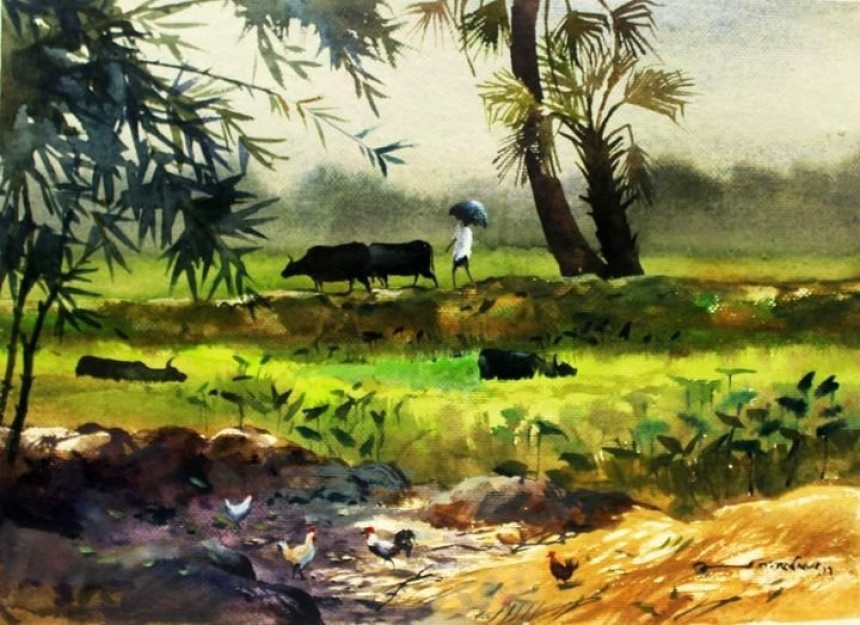
Water colours painting, as shown above, has been zealously picturized fervently. Greenery, plants, and fabulous grassy patches and trees are opulent and aureately exhibited in taffeta and in Georgette styles amiably. Cows or buffaloes have been obtrusively glorified on the sides of the road superlatively. Shepherd is seemed aside of the same cows jazzily and groovily. Scenic views of rural areas have been ostentatiously and supremely highlighted rapturously and in mesmerized manners greatly.
August and engrossed sights are alluring, splendorly and peerlessly exhibited in top notch and in amazeballs like in depiction glories and sublimity of nature amiably and daintily. Peace and tranquility have been bequestly and jubilantly exhibited wizardly and sterlingly illustrated in zestful and in panoramic in pristine and whimsically depicted grotesquely and mirthfully as well as infatuating in fairness manners greatly.
Best wishes to water colours painting and regard to Mrs shahnaz.haidery@gmail.com for penning these lines on a water colour paining.
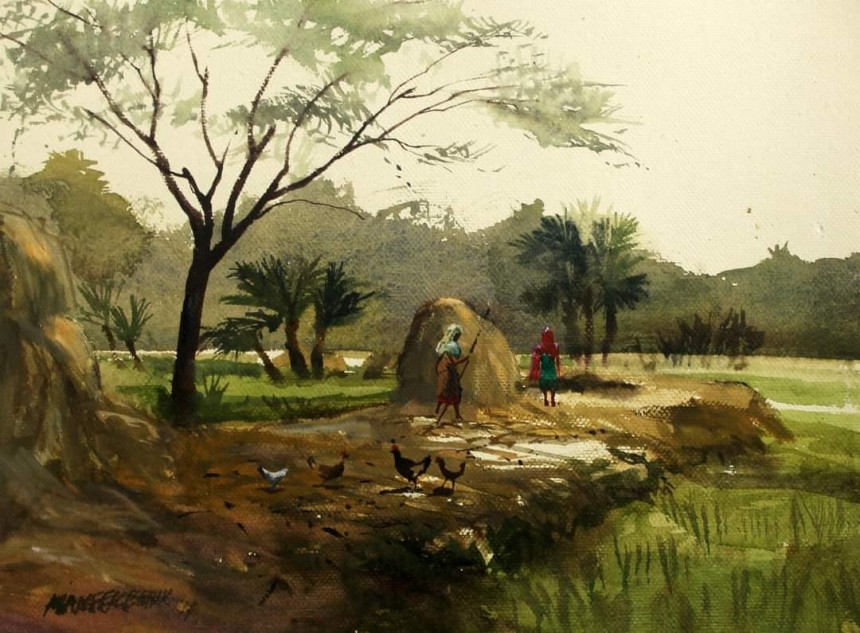
Easy Watercolor Painting Ideas for Beginners
Fruit. Fruit is a great watercolor painting idea for using layered colors to practice the smooth contours and complex tones.
Wet-on-Wet Freeform.
Gradients.
Geometric Shapes.
Layered Colors.
Simple Still Life.
Color Wheel.
Natural Patterns.
In he video below " HOW TO USE WATERCOLOR PENCILS? Beginner's Guide" is presented; there are more of such videos on You Tube. This write up has been compiled with the help of info available on Free Web Net.
